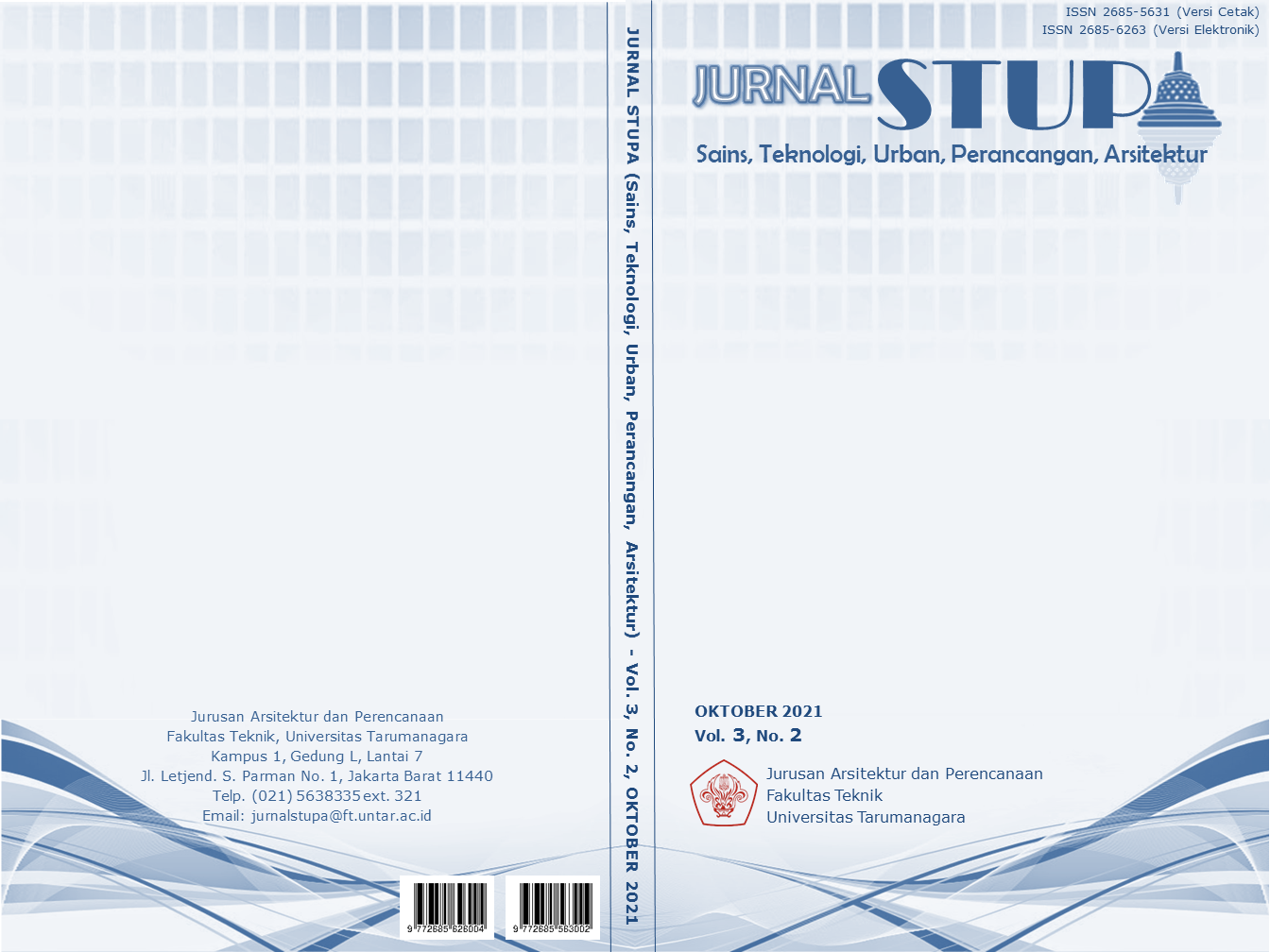MUSEUM BIOTA LAUT SUNDA KELAPA
Isi Artikel Utama
Abstrak
As a result of very rapid technological advances in this day and age, the ecosystem of life on earth is disrupted. Not only on land, there is damage to ecosystems in the sea, especially those caused by human activities that make the sea a place for waste disposal, both in the form of garbage and industry. The disruption of the ecosystem causes the life of marine biota to be preserved and educated to the public. One way to overcome the marine biota ecosystem caused by the lack of public awareness of the life of the marine biota is through education combined with tourism or seaside recreation. The issue of going beyond ecology to architecture for goodness and life as the theme of Stupa 8, provides ideas on how architecture can play a role in helping to maintain the ecosystem of life in the sea. As an effort to answer how architecture can play a role in community life, from the issues raised, an approach is used using contextual design methods. This method is used so that there is a context of marine life in the Sunda Kelapa environment which is the location of the site. Contextual is used as a design method by taking into account existing activities and the history of the existence of the Sunda Kelapa port and the existence of the first aquarium in Jakarta. With the presence of a marine biota museum that will be designed in the Sunda Kelapa Harbor area, it will complement the existence of a maritime museum, a hexagonal market as a means of tourism and community recreation. By utilizing multi-media technology in demonstrating museum materials and the existence of an aquarium, it is hoped that it can attract people to want to visit the museum. And especially can play a role in educating the public to be more concerned about marine life that is increasingly polluted.
Keywords: Technology Advancement; Beyond Ecology; History and Culture; Plastic waste Pollution
Abstrak
Kemajuan teknologi yang sangat pesat pada zaman sekarang ini, membuat ekosistem kehidupan di bumi menjadi terganggu. Bukan hanya di darat saja terjadi kerusakan ekosistem di laut pun terutama yang disebabkan oleh ulah manusis yang menjadikan laut sebagai tempat pembuangan kotoran baik berupa sampah maupun industri. Salah satu cara mengatasi ekosistem biota laut yang disebabkan oleh kurangnya kesadaran masyarakat terhadap kehidupan biota di laut adalah melalui edukasi yang digabungkan dengan wisata atau rekreasi tepi laut. Isu melampaui ekologi menuju arsitektur untuk kebaikan dan kehidupan sebagai tema soal Stupa 8, memberikan pemikiran bagaimana arsitektur dapat ikut berperan dalam menjaga ekosistem kehidupan di laut. Dalam menjawab peran arsitektur dapat dalam kehidupan di masyarakat, berdasarkan isu dilakukan pendekatan yang menggunakan metode perancangan kontekstual. Metode ini digunakan agar terjadi konteks dari kehidupan biota laut terhadap lingkungan Sunda Kelapa yang menjadi lokasi tapak. Kontekstual yang dijadikan metode perancangan dengan memperhatikan kegiatan yang sudah ada serta sejarah keberadaan Pelabuhan Sunda Kelapa serta pernah adanya aquarium pertama di Jakarta. Kehadiran museum biota laut di area Pelabuhan Sunda Kelapa ini, akan melengkapi keberadaan museum bahari, pasar hexagonal sebagai sarana wisata dan rekreasi masyarakat di kawasan kota tua. Dengan memanfaatkan teknologi multi media dalam peragaan materi museum serta adanya aquarium diharapkan dapat menjadi daya tarik masyarakat untuk ingin berkunjung ke museum. Dan terutama dapat berperan mengedukasi masyarakat agar lebih peduli terhadap kehidupan laut yang semakin tercemar.
Rincian Artikel
Referensi
Ching, F.D. K. (2008). Arsitektur: Bentuk, Ruang dan Tatanan. Jakarta: Penerbit Erlangga.
Fritjof, C. (1996). The Web of Life: A New Scientific Understanding of Living Systems. New York: Anchor Books.
Fachrimuhammadabror. (n.d.). Tipologi Museum. Retrieved from http://ejournal.uajy.ac.id/824/3/2TA11806.pdf
Winata, S. (2021). Eco-Logic. Universitas Tarumanagara: Jakarta
https://www.google.com/url?sa=t&rct=j&q=&esrc=s&source=web&cd=&ved=2ahUKEwib1eXGg-
LxAhXiX3wKHUU6CtwQFnoECBoQAA&url=http%3A%2F%2Fstaff.uny.ac.id%2Fsites%2Fdefault%2Ffiles%2FHandout%2520Ekologi_0.pdf&usg=AOvVaw0mkeCm0DiwXVxgIg3HarJZ



